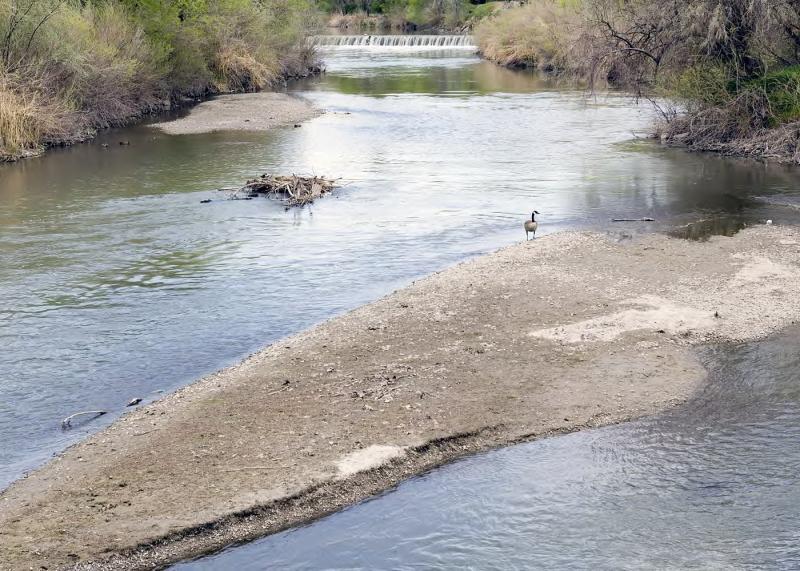Jordan River
The Jordan River is a 51 mile watercourse that flows from Utah Lake to the Great Salt Lake, though much of its water is withdrawn by humans along its course. More than a million people live within the watershed area that the Jordan drains, and it has been the subject in recent years of cleanup efforts. The discharge at the river’s mouth averages 524 cubic feet, although this varies dramatically with the changing of seasons, the melting of alpine snowpack high above Utah lake, and weather events. The Jordan has provided resources to human communities since time-out-of-memory: an archaeological site along the River dates to 3,000 years ago, when members of the desert archaic culture would have been drawn to the hydrological resources of the Wasatch Front. It was also a resource for Goshute and Western Shoshone people, who called it Pia-Okwai, for “Big River”. When the Mormon pioneers arrived in 1847, settlements sprang up along the River, which could provide water for domestic and irrigation uses, in addition to providing power via the turning of wheels. Over the course of the 20th Century the River became increasingly regulated, with canals, ditiches, dams, and pumps funneling its resources to benefit human communities. Originally a cold-water fishery home to 13 native species including the Bonneville cutthroat trout, today it is considered a warm-water fishery whose most abundant species is the invasive common carp. While the 1960s adoption of the treatment of raw sewage and the regulations springing from the 1970 Clean Water Act have both helped the River, the health of the watercourse is still affected by the legacies of a century and a half of agricultural runoff, mining waste, and untreated raw sewage.







